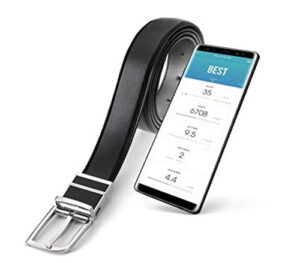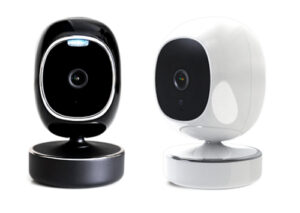It’s CES show time again with the consumer electronics world converging in Las Vegas. This year, yet again, manufacturers are revealing products that indicate their R&D departments have spent the last twelve months adding network functionality and screens to devices that don’t need it and thus allowing their marketing people to claim AI is running everything, when it isn’t.
For example, how often have you thought that what you really need is your toothbrush to be able to tell your smartphone how your brushing is going? Or perhaps you’ve always wanted a plank of wood to be your home automation panel. Now thanks to technology developers you can achieve those dreams. Worried that you are eating too much? How about a sensor-laden belt connected to your mobile that tells you when to stop filling your fat face? Now you can have one. Oh, and they are still pushing driverless cars. And VR.
Amidst all of the media/PR stunt releases (you do wonder if manufacturers are only looking for a positive public response to genuinely go and put products on the market) there are always a few items that reveal the way that electronic technology is likely to go in the real world. OLED displays are big business suggesting that the drive towards even more realistic, life-like TV is still ongoing. Whether this will have any impact on the CCTV market down the line remains to be seen as the average resolution of cameras doesn’t require such advanced screens (and of course there’s the cost implication too).
Speaking of cameras, the trend for cramming lots of tech into one small device continues with the launch of a video conference product called PanaCast 3, which uses three 13-megapixel cameras working as one via the PanaCast Vision Processor to capture and entire room on video, a digital signal processor and two omnidirectional microphones with something called a “multi-sensor AI array” that has built-in capabilities to detect people. PanaCast 3 delivers video over a 180-degree field of view at panoramic-4K resolution (3840×1080), reportedly without the distortion of ultra-wide angle or fisheye lens cameras. That’s a very high tech camera to use to sit and watch people drinking coffee around a table and having a chat.
And video conferencing cameras don’t just transmit your voice and image, they can make you look good too. PerfectCam 2 is an “AI-powered” web camera plug-in, designed to provide professionals complete video conferencing privacy via background blur technology. Combined with lighting enhancements, skin smoothing and instant appearance optimisation tools, users can maintain a professional look at all times. Now there’s something for the R&D team at Hikvision to play with. Here’s the marketing: “You were caught stealing on camera, but don’t worry, now we can make you court room ready. Be a hot felon with the SmoothCriminal range of cameras.”
The confusion about what is AI and what is analytics continues with cameras being labelled as AI driven just because they feature basic facial and object recognition. One such unit is the SimCam, which is described as an on-device AI camera for smart home with Intel Movidius Inside. SimCam is able to recognise a person, face and objects for “precise” home surveillance and integrate with other smart home devices as a hub. Analytics then.
Another new smart home idea is RoomMe. A sensor that looks like a smoke alarm that “recognises” who is in the room and adjusts the temperature of your room, television channel, lights and music to your own personal preferences. Like the room to be 22.5°C and dusky when listening to Megadeth? Now you can have that. Oh, how your life has been crying out for something that can create such a scenario. Just hope the person in the room with you has the same tastes….
Home automation, energy management and adding sensors into everyday products look like being the trends for the next few years. It’s easy to be cynical when it comes to the idea behind some of the technology and again, let’s be honest, a number of the systems on show at CES aren’t even a reality – they’re devices looking for crowd funding or business idea acquisition, so might not even see the light of day.
Trolling through the products being launched or featured at the event does indicate how much of the tech R&D going on at the moment is centred around connectivity with smartphones, so as long as we continue to rely so much on hand held devices then expect more of the same going forward. Whether the consumer market is genuinely strong enough to support so many systems remains to be seen.
Finally, if you’re wondering quite how razor blade manufacturers can keep adding new ideas (more blades, glide strips, battery-power, etc) so that they can push something new down our throats on Sky Sports, the next step was announced at CES with the launch of heated razors. The best a man can get, until next year.




